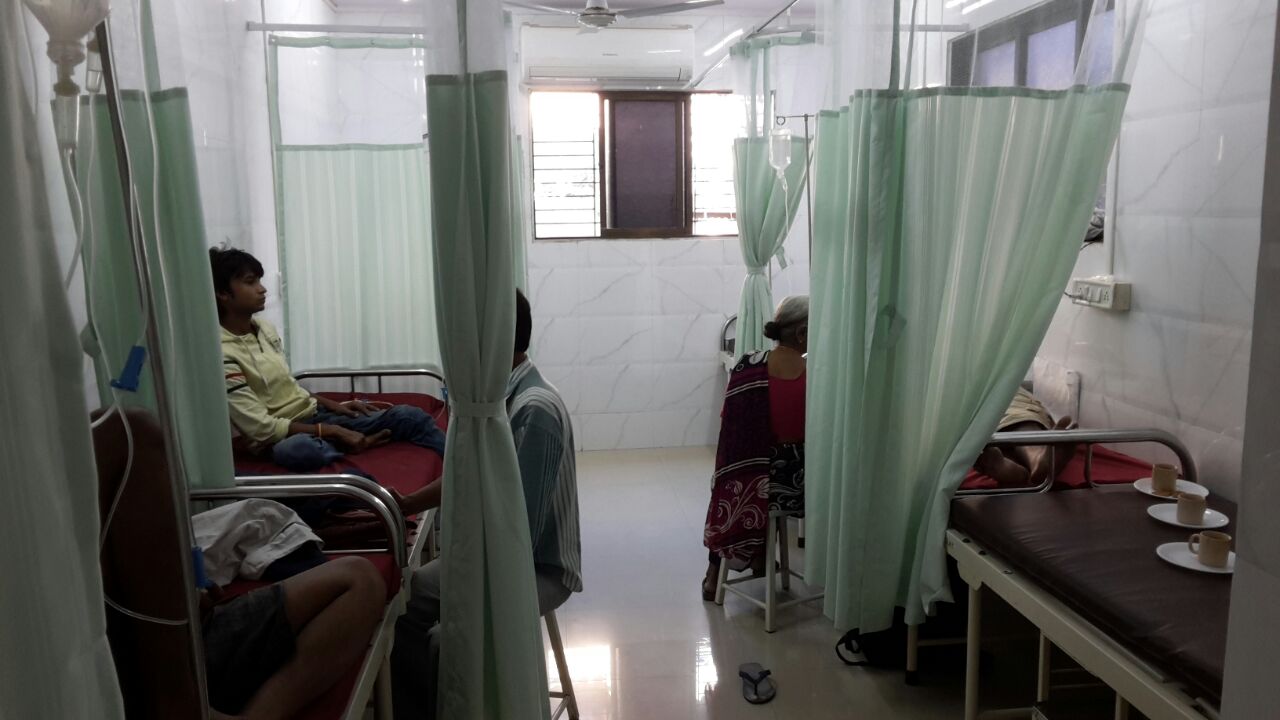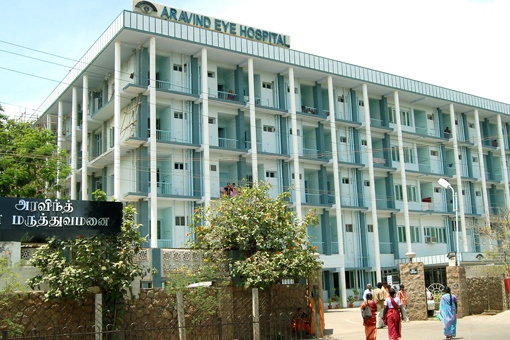Understanding India's Hospital Ecosystem — A Guide For Medical Device Companies
By Gunjan Bagla and Rajnish Rohatgi, Amritt Inc.
Many medical devices are utilized in hospitals and surgical facilities rather than physicians’ offices or patients’ homes. This article is meant to provide device companies with an insider’s overview of India’s hospital ecosystem to help frame a successful market entry or expansion strategy. When some foreign device makers approach the market in India, they often make assumptions that its healthcare ecosystem might be just like China or the United States or Europe, and this can lead to disappointing sales.
We estimate that healthcare expenditure in India will rise at over 15 percent annually for at least the next five years, driven by new entrants to the patient marketplace as per capita incomes rise and by access to new procedures, largely of Western origin.
Segmentation Of Hospitals
While free universal healthcare is a national goal in India, the reality has been very far from that. Over 80 percent of the hospital beds in India are operated outside of government control. The central (federal) and state (provincial) governments and their affiliates control only about 20 percent of hospital beds across the country.
Many of the non-governmental hospitals arose from solo practitioners seizing an entrepreneurial opportunity to provide extensions to outpatient services. For example, an obstetrician adds an inpatient wing to her home with four to six beds, and once she achieves positive cash flow, she buys a small piece of land to build a small inpatient facility serving residents in a two-mile radius. We estimate that there are 40,000 such small, independently owned community hospitals in India with less than 30 beds each. In India, such hospitals are often called “nursing homes,” although they provide anesthesia, surgery, and even intensive care services.
There are many ways to slice and dice the hospital marketplace in India: urban vs. rural, secondary vs. tertiary care, foundation owned vs. for-profit, modern vs. legacy, and so on. For Western companies looking at India, we find that the following approach, although not exhaustive by any means, is the most useful starting point:
Private Hospitals
In this segment we include for-profit and not-for-profit hospitals. Not-for-profit hospitals may be run by religious charities, such as churches and temples, or by foundations associated with wealthy families, such as the Ambanis, Birlas, and Tatas. For-profit hospitals range from sole proprietorships and partnerships all the way to national and international corporations listed on stock exchanges.
For our purposes, we have gone beyond the traditional segments based on demography (number of beds) to include behaviors around quality, which we believe provides a more predictive segmentation. We call out these segments as Leaders, Progressives, and Community Hospitals.
Much of the recent international media attention has gone to corporate hospital chains, such as Apollo Hospitals. We refer to these hospitals as Leaders — having taken the lead in improving quality to global standards and in enhancing patient and healthcare worker safety — and they have targeted the uppermost socio-economic strata of Indian society, as well as medical “tourists,” largely from Asian and African countries. It is not uncommon to find a number of Western-trained physicians in key positions at such locations and these medical facilities generally match Western protocols and standards of care. These corporate chains, often listed on India’s stock exchange, have one or two large tertiary care hospitals in top cities and a network of smaller primary and secondary care facilities that feed patients into the mother facility.
Most patients at these facilities are paying out-of-pocket or via private insurance. Western medical companies find it easiest to target this sub-segment since they seem familiar and provide a ready market that can afford Western products at global prices. In this segment, global go-to-market strategies of value addition to clinicians, and of training, education and in-servicing are generally successful with some adaptation to Indian conditions. The Leaders also make great reference clients for the broader Indian market, since their brands are respected by both patients and physicians. But this is the segment where the competition for attention is highest, and the total revenue and margin potential may not be huge for new entrants from overseas.
The next segment, often underestimated or ignored by western companies, is what we call the Progressives. These hospitals, of similar size (100 to 500 beds) as the Leaders, serve the upper and middle class. Run by individual business families, physician groups, or charitable trusts, they have traditionally lacked the infrastructure or capital to attract affluent or insured Indians and medical tourists; they find it difficult to readily adopt top-of-the-range Western products.
However, in recent years, a small but growing portion of their revenues are dependent on third-party insurance payments. As the deep-pocketed Leader hospitals expand their services into the market that used to be dominated by the progressives, the progressives often respond by taking loans or private equity funding to upgrade their quality of care and their equipment. Therefore, they can be good candidates for innovative medical device vendors who wish to avoid a direct confrontation with the legacy “gorillas,” strong in the Leaders’ segment.

The third and final segment of private hospitals comprises 70 percent of the hospital beds in India, but has less than a hundred beds per location. We estimate that there are over 40,000 such Community Hospitals, or “nursing homes,” as they are called in India. With an average of about 25 beds each, these facilities are typically run by a physician-turned-entrepreneur, who might also be the buyer and the key decision-maker for any Western-origin products and services. You can find these facilities in major and minor cities across India. Most patients of these nursing homes are middle class or working class families who pay out of pocket.
This collectively large segment of individually small customers has remained beyond the viability of the legacy medical device companies. The legacy vendors cannot afford to invest in direct selling with intensive pre-sales and meet the inservicing needs of these smaller customers. Some well-known companies that have re-oriented their global and Indian R&D to products that are “designed and made for emerging markets” have yet to show a runaway success among these customers. We believe that innovative Western companies with the right mindset can leapfrog themselves into dominant positions by cracking the code to this segment. The story is still being written.
Public Sector Hospitals
India’s 29 states and seven union territories typically run a network of medical facilities which provide services to any Indian citizen at nominal fees. Primary care centers may have just five or six beds and could be located in an urban or rural area. State-run community centers have about 30 beds and may perform minor surgeries and in-patient procedures. Many counties (or “districts,” in Indian parlance) will have a large hospital with at least 300 beds and providing a full range of services, and we estimate that India has at least 600 such facilities. Many states also run research and teaching hospitals through their health or education ministries; these may have 500 to 1,500 beds, and we estimate that there are about 200 such teaching hospitals. In some states, private foundations also run teaching and research hospitals.
The federal government (“central” or “union” government, in Indian vernacular) also runs hospitals via the Ministry of Railways and the Ministry of Defense, each serving over 1 million employees, plus retirees and their families, typically with lifetime healthcare. Public Sector Undertakings, owned by the federal government, such as the Nuclear Power Corporation and the Steel Authority of India Ltd., also run their own hospital networks, often in remote townships where their employees are located.
Many public sector hospitals have fairly regimented buying practices, utilizing tenders and favoring the low bidder. While the opportunity for high sales volume is apparent, it does take considerable investment and understanding of local practices to make a dent in this market.
Selected Vignettes
In this section we describe just a few hospitals of various kinds from across India.
The All India Institute of Medical Sciences (AIIMS) in New Delhi is a teaching institution and its 1,766-bed hospital has over 1,300 physicians on staff. Established in 1956, the facility sees about 4 million patients a year while maintaining high standards of healthcare. Many of India’s key opinion-leader physicians are on the staff of AIIMS. Based on AIIMS’ success, the Ministry of Health has set up similar facilities in seven other cities.

Fortis Healthcare Limited is India's second-largest corporate healthcare provider. Starting with its first hospital in 2001, Fortis is now a network of 45 hospitals with the capacity of 4,800 beds. Fortis runs multi-specialty hospitals as well as super-specialty centers, providing comprehensive tertiary and quaternary healthcare.
Fortis has been growing through a combination of acquisitions, new builds, and management contracts of existing facilities. In addition, there are two hospitals in the company which are run in a public-private partnership framework. The company employs over 10,000 and hospital revenues exceed $100 million annually.

Aravind Eye Hospital was founded by Dr. Govindappa Venkataswamy at Madurai, Tamil Nadu in 1976. It has grown into a non-profit network of 10 eye hospitals and has had a major impact in eradicating cataract-related blindness in southern state of Tamil Nadu.
Aravind has treated over 32 million patients and performed 4 million surgeries, the majority of them being inexpensive or free, making it the world’s largest and most productive eye-care service group.

Conclusion
While the mix of public and private sectors and the segment sizes within the private sector are changing fast, there is opportunity for foreign medical device companies in each of these segments. New entrants can rarely play efficiently in more than one or two segments, and should almost never delegate this decision to their Indian distributor.
Note: This article is a summary of a longer white paper on Indian hospitals that will be published in January 2016. Med Device Online subscribers can request a complimentary copy by emailing the authors at usa@amritt.com (please include your name, company, job title, and work email).
About The Authors
 Based in Los Angeles, Gunjan Bagla is managing director of Amritt Inc., a California-based consulting firm focused on helping American companies to succeed in India. His clients include Covidien, Roche Diagnostics, BD, Nordic Naturals, Johnson & Johnson, Gojo, and many more. Gunjan spoke three times at the MD&M West Conference in Anaheim, and was on the keynote panels at MEDevice San Diego and IMDI in Ahmedabad, India.
Based in Los Angeles, Gunjan Bagla is managing director of Amritt Inc., a California-based consulting firm focused on helping American companies to succeed in India. His clients include Covidien, Roche Diagnostics, BD, Nordic Naturals, Johnson & Johnson, Gojo, and many more. Gunjan spoke three times at the MD&M West Conference in Anaheim, and was on the keynote panels at MEDevice San Diego and IMDI in Ahmedabad, India.
For his India expertise, he has appeared in The New York Times, the Los Angeles Times, and the Washington Post, and on Bloomberg TV, BBC Television, and Fox Business News. He also writes about India for the Harvard Business Review and the Huffington Post. Gunjan has an MBA from Southern Illinois University and a mechanical engineering degree from the Indian Institute of Technology (IIT) Kanpur in India.
 Based in New Delhi, India, Rajnish Rohatgi is a senior advisor for Amritt’s Medical Technology Practice. He spent over seven years building BD’s medical surgical business in South Asia. Rajnish has over 25 years of marketing, sales, and leadership experience in India and Africa in the healthcare, medical device, and consumer sectors. This includes a stint as VP of marketing for Max Healthcare, a leading hospital chain in North India.
Based in New Delhi, India, Rajnish Rohatgi is a senior advisor for Amritt’s Medical Technology Practice. He spent over seven years building BD’s medical surgical business in South Asia. Rajnish has over 25 years of marketing, sales, and leadership experience in India and Africa in the healthcare, medical device, and consumer sectors. This includes a stint as VP of marketing for Max Healthcare, a leading hospital chain in North India.
Among his key accomplishments at BD was pioneering a customer-centric segmentation strategy, followed by tight tactical execution, to win against low-cost local competitors. At Max Healthcare, Rajnish developed one of the first branding strategies for a healthcare provider in a market where the only brand had been the physicians themselves. Rajnish has an MBA from the Indian Institute of Management Calcutta (which was established by MIT’s Sloan School) and a bachelor’s degree in metallurgical engineering from IIT Kanpur.
